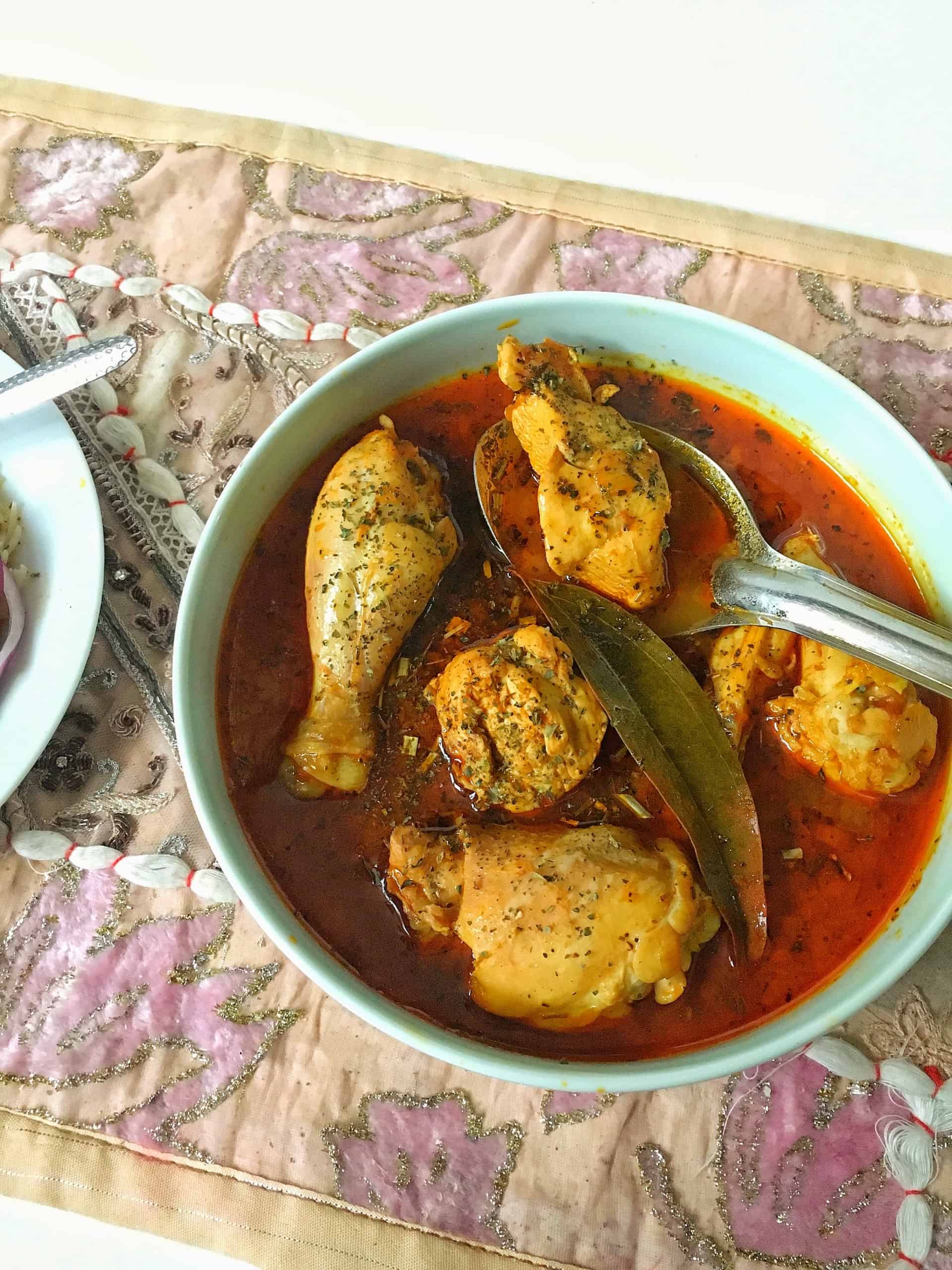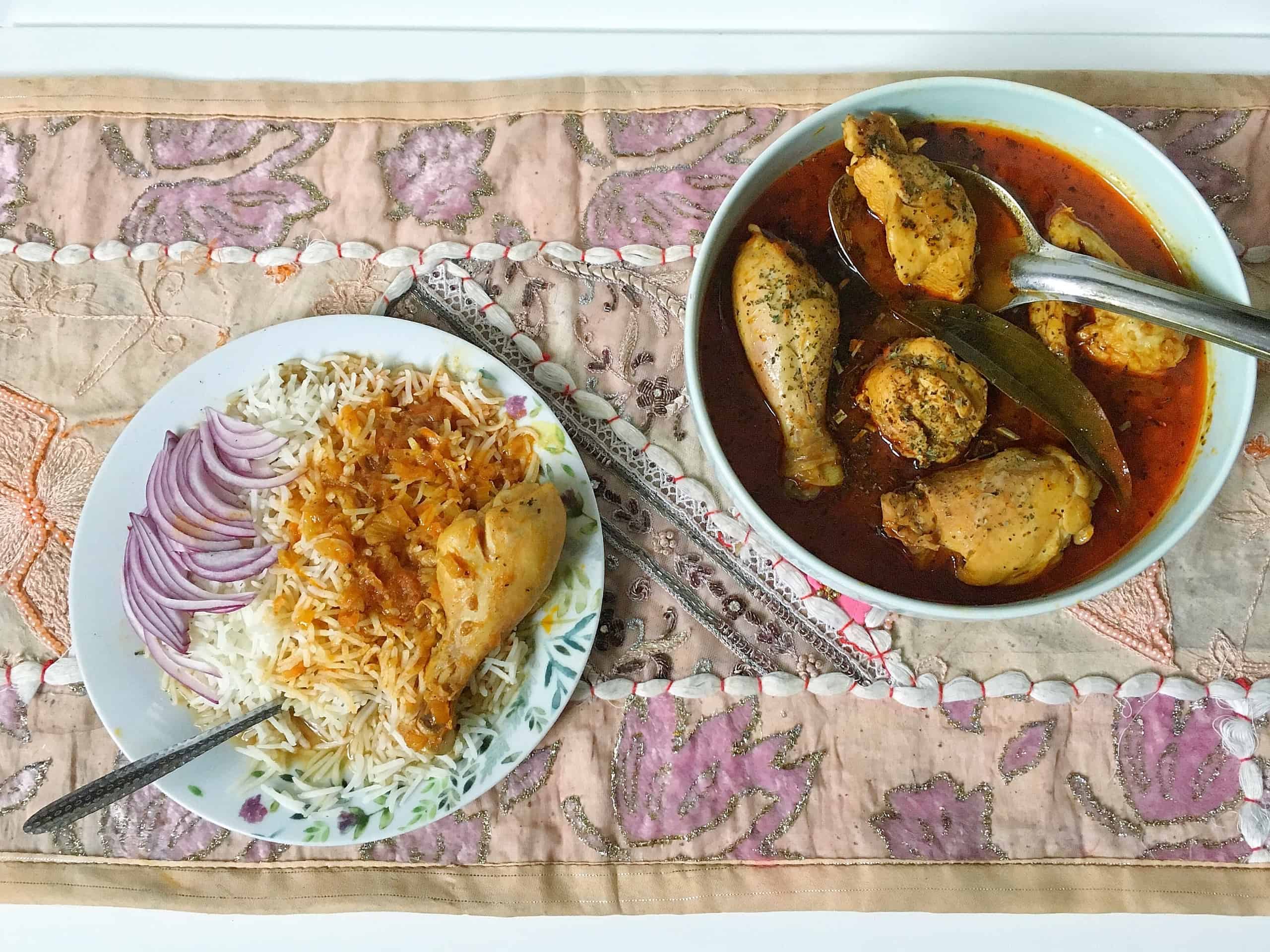Chicken salan is just so pure and warming, a simple and satisfying hug in a bowl. It’s pretty straightforward to make with a few basic ingredients we all probably have on hand if we cook Desi food on the regular.
The art of making the perfect masala base
Shorba refers to the gravy/soup of the curry. A good gravy is essential to get the right feel and flavour for your curry. I’ve talked about getting that elusive shorba consistency before in my Aloo Anday recipe. The trick is to get a good balance between having a shorba with body and colour without making it too thick and gloopy.
We’re going for a soupy, smooth consistency for this curry - not a thick, dry base a’la Chicken Bhuna or Chicken Karahi. Your onions and tomatoes MUST be jammy and smooth before you add in your chicken - do NOT proceed until you’ve got this right! If you add your chicken in whilst you’ve stil got large chunks of onions hanging around, your gravy will NOT be soupy or smooth. It can be HARD getting those onions to break down. My best advice here is to get your best knife and really dice those onions down till they’re fine and tiny. This will help them melt into the curry significantly easier than if they were chopped thick and clunky. If you’re short of time, or the masala just isn’t becoming smooth, a quick blitz with a blender or food processor will solve all your woes 😁 The quantity and ratio of tomatoes and onion matters too… hint: you don’t need a lot! Too much onion + tomato for the masala = a thick, gloopy gravy, when we’re after a soupier consistency!
Finish off the Chicken Salan with some garam masala and your garnish of choice - either fresh coriander or dried fenugreek.
How to adjust the recipe for any add-ons: When you add any add-on will depend on how long it will take to cook. Quick-cooking or pre-cooked add-ons, such as frozen peas or tinned chickpeas/beans will need just 10 minutes. However, add-ons like potatoes or pumpkin may take as much time as the chicken and can should be added at the same time as you add the water. Boiled eggs don’t do well with extra cooking, and can be added at the same time as your garam masala.
We start by heating some oil in a deep pot and adding in our onion. This should be finely diced, because we want the onions to melt/disintigrate/dissolve into the curry sauce. Larger pieces of onions makes that harder to happen, so finely diced all the way. Get those onions lightly golden, careful not to burn or brown unevenly. Add your tomatoes, cut into halves, straight side facing down. I like doing this because after a few minutes on the heat, the skin will melt off by itself and you can discard it, leaving you with a smoother base. Add a splash of water alongside the tomatoes, put the lid on and allow this to ‘steam’ for 5 minutes, until the tomato skin softens and slips off.
potatoes peas chickpeas any kind of lentils or beans, such as kidney beans boiled egg cubed pumpkin or butternut squash
Can I use boneless chicken?
This recipe is best made with bone-in chicken. The bone gives the curry a much deeper and warming depth of flavour boneless just cannot replicate. If you don’t like bone-in, I’d recommend using boneless chicken thighs for juicy, tender chicken - chicken breast can become tough and dry. To subsitute bone-in chicken with boneless, I’ve found success with keeping quantity stated in the recipe the same.
About the spices used
This recipe calls for a few whole spices - cloves, black peppercorns, bay leaves and green cardamom. These are optional but highly recommended for a more mature, deep flavour and fragrance. But if you don’t have one or another of these whole spices, don’t feel like the show can’t go on! Just omit them and chug along. I’ve used paprika/Kashmiri red chilli powder in this recipe. This gives the curry a wonderfully vibrant, red colour. It’s fine to leave this out, but your curry won’t be as red as pictured. Finally, regarding the garnishing. I have used kasuri methi (dried fenugreek) here partly because I like the flavour and fragrance of it but mostly because I don’t always have fresh coriander to hand. Kasuri methi is a life saver on those days when I don’t want a naked, garnish-less curry but don’t have coriander! You are free to use either, whichever may be convenient.
How to serve
The beauty of this dish is it’s easy to serve with whatever you have to hand. It pairs well with any kind of flatbread such as roti or naan, or plain basmati rice - how unfussy. It also seems to easily find itself at home on a busy spread too. Here are some of my favourite chicken curry combo meals for some inspiration:
Serve the curry atop a vegetarian pulao, with aloo tikki and raita on the side If serving with another curry, I’d recommend something drier to balance out the soupy nature of this, such as aloo palak or Punjabi cholay. We enjoy our chicken curry with a buttery, crispy paratha and a side of sweetened Greek yogurt.
Without further ado, here is the recipe! Enjoy, with love x
📋 Recipe
Enter your email & I’ll send it right over. Plus, you’ll get bonus Pakistani food-goodness from Fatima Cooks, like new recipe alerts, exclusive email-only recipes + more! By submitting this form, you consent to receive emails from me. Your details are secure. Opt-out any time.








